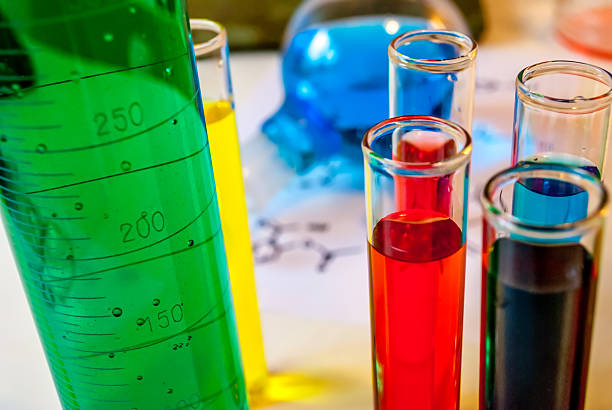This document is an educational document prepared by the Vcycletech Co., Limited as A resource for the general public.
I. INTRODUCTION
Phosphates have many uses in the treatment of drinking water. They are Used to prevent "red" (iron) and "black" (manganese) water; to prevent and/or Delays scale formation (due to mineral deposition) and corrosion (due to low pH and/or low)
heterogeneous metals in the water distribution system) and reduced soluble lead and copper in the water distribution system.
Drinking water is delivered to the consumer's tap.
The Environmental Protection Agency (EPA) is responsible for regulating "safe drinking water."
(SDWA), which provides for the enhancement of public drinking water safety.
Improving drinking water supplies by establishing and implementing a national drinking water supply system.
Regulations. Congress has given the United States the primary responsibility for establishing laws and regulations.
Environmental Protection Agency (EPA). Until 1990, the U.S. Environmental Protection Agency (EPA) administered a certification system.
Chemicals, including phosphates, were used in drinking water treatment processes.
In 1990, the National Sanitation Foundation International (NSF) undertook this project.
NSF was responsible for the entire certification process. The process includes several steps. These include.
NSF's toxicologist conducts a comprehensive review of the toxicology database and impurity profiles.
NSF then audits all production sites. Samples are analyzed for confirmation.
Impurity data submitted in the certification application. The raw materials used in the processing are.
Compare the list submitted, and any gaps are filled. Raw material suppliers are
Detailed information similar to that of the product application is also required.

ii. Some Characteristics of Phosphates for Drinking Water Treatment.
This section discusses selected characteristics of phosphates that make them suitable
As an additive for drinking water treatment.
A. Chelation
Chelation is the chemical combination of a chelating agent and a metal ion.
Soluble complexes are formed. Hardness ions are metal ions commonly found in water and.
They include calcium and magnesium. Polymerization is pH-dependent given the polymerizer.
Works best in a specific pH range. Sodium hexametaphosphate (SHMP) has good properties.
In the neutral pH range, pyrophosphates and polyphosphates work best in alkaline conditions.
Conditions.
B. Threshold Activity
Many polyphosphates can achieve the desired effect at concentrations well below.
This appears to be necessary for chemometric (molar equivalent) reactions. Example.
Hardness 200ppm water (calcium carbonate)
In theory, about 500 ppm of SHMP is needed to chelate calcium.
In practice, only 2-4 ppm of SHMP is typically required to inhibit scale formation. This "threshold
The SHMP effect is apparently produced by interfering with early crystal growth.
C. Flocculation
Flocculation occurs because of small dissolved particles, usually smaller than 10.micron size tends to attract each other due to the presence of forwarding and reverse regions.
Each particle has a negative charge on it. These particle clusters, due to the Contrary charge interactions form hard deposits and aqueous solutions. To prevent this from happening.
In this process, a threshold level of polyphosphate is added to the water—threshold level of polyphosphate.
Polyphosphates tend to cover small particles and reduce the attraction between them.
Changing the surface charge distribution. These coated particles tend to repel rather than repel.
The flocculated particles are
Suspended in water with little or no tendency to settle in stagnant water. This property is.
It is important to remove the hard scale (CaCO3) and iron oxides present in the water.
D. Chlorine Stability
Orthophosphates and polyphosphates are stable in the presence of chlorine and can meet the following criteria:1.
Chlorinated drinking water. There are no interactions that would reduce the content or potency of the substance.
Chlorine or polyphosphates. Besides, iron and manganese are trapped as iron and manganese.
Chloride is colorless before and after chlorination.
E. Hydrolytic Stability
Linear polyphosphates are slowly hydrolyzed in solution. This process continues until.
Short-chain phosphates are further broken down to produce short-chain polyphosphates.
Metaphosphate and orthophosphate. At neutral pH and normal room temperature, this.
Hydrolysis is relatively slow. At 20oC and a pH of 7, a pyrophosphate is about 50%.
The shortest polyphosphate) will revert to orthophosphate within 12 years. At 50oC, the half-life is
Reduced to two months. Generally, lower pH and higher temperatures are elevated.
Hydrolysis. Because long-chain polyphosphates break down into shorter ones, they remain.
Functional chains, the entire stepwise process should be considered when estimating shelf life.
Longevity and product stability.
F. Safety
In 1990, the National Science Foundation (NSF) launched a certification program involving plants.
NSF Certification Process
Applies to all plants and products of the company that can be used to treat drinking water.
Water.
ii. Use of phosphate and phosphoric acid in drinking water treatment Phosphate and phosphoric acid is used in drinking water treatment.
Phosphate for drinking water treatment has the following functions: Iron.
Manganese control, scale inhibition and descaling, corrosion control, and chlorine control.
Stabilization.

A. Iron and Manganese Control
Iron and manganese are usually found in groundwater and well water in the divalent form.
The forms (Fe++ or Mn++) are soluble. When exposed to air, these forms are oxidized to "Fe++" or "Mn++."
The trivalent form (Fe+++ or Mn++) is insoluble in water and has a color. Chlorination of water
Low iron content results in the formation of insoluble iron oxide or iron chloride.
Insoluble iron salts cause what is commonly known as "red water" and can cause a Red and brown stains on laundry, porcelain, cutlery, and glassware. Manganese Compounds
A similar reaction occurs with the formation of "black water," which may result in brown-black stains on the
Contact surfaces. Other heavy metals can also react with chlorine to form similar water-insoluble substances.
Materials. Discoloration of water is considered unsightly, and 0.5 mg/l of iron and 0.05 mg/l of manganese give water an unpleasant taste.
mg/l of iron and 0.05 mg/l of manganese give the water an unpleasant taste.
Use a 2-4 ppm polyphosphate such as sodium hexametaphosphate (SHMP).
Sodium tripolyphosphate (STP) or tetrasodium pyrophosphate (TSPP) before chlorination.
Leads to the formation and elimination of colorless heavy metal phosphate complexes.
Formation of insoluble compounds. Due to the calcium and magnesium salts
Orthophosphates are relatively insoluble, and the hardness of water can be reduced by precipitation.
The choice of which orthophosphate to use depends on the pH requirements.
B. Removal of Lead and Copper
Lead and copper in drinking water are primarily leached from pipes.
Plumbing fixtures. In municipal drinking water, copper levels are limited to 1.3 mg/L, based on.
SDWA regulations require it. Water has a metallic taste when excess copper is present.
(3 mg/L) can turn surfaces from blue to green. In adults, it contains
Copper above 3 mg/L can cause nausea, vomiting, and abdominal pain. Lead is limiting.
Lead extracted from municipal drinking water is reduced from SDWA to 15 ppb. Lead in drinking water does not remain in the air.
It remains and generally cannot be tasted.
Lead exposure can cause irreversible mental and physical development.
Developing fetuses, infants, and young children. For adults, long-term exposure can cause the following:
Damage to the brain, kidneys, nervous system, and red blood cells. Use of lead-based
The United States banned the use of lead solder in 1988. However, lead may be present in older houses, which are very old.
Municipal water systems, as well as brass fittings and plumbing fixtures. Lead leaches into municipal water systems, brass fittings, and plumbing fixtures.
Contamination of piping systems can be greatly reduced by introducing water-soluble orthophosphates into the piping system.
Drinking-water distribution systems. At low water levels, phosphate reacts with lead, thereby reducing both lead and phosphate levels.
Copper and hardness ions (calcium and/or magnesium) to form an insoluble coating.
The inner surface of the distribution system. Once this coating is formed, the observed levels of lead and
Copper levels in drinking water drop rapidly. This effect can be sustained by.
Adding phosphate metering to the system.
C. Scale inhibition and removal
The formation of scale on the surface of drinking water systems is due to The carbonate or sulfate of magnesium or calcium crystallizes out of the solution. The very low
The amount of polyphosphate (1-10 ppm) interferes with crystal growth. This type of scale
Inhibition is called a threshold property because it occurs at a level far below the next level.
Required for random responses.
Threshold inhibition of calcium polyphosphate and magnesium carbonate.
pH formation is particularly effective in the 8-10 range, where the carbonate scale in drinking water can affect the quality of drinking water.
Water is a major problem. In the lower pH range, the calcium sulfate scale is often a problem. Calcium sulfate tends to be a problem in the lower pH range.
At high pH conditions, the scale inhibition mechanism is similar to that of calcium carbonate.
Calcium sulfate at similarly low levels (1-10 ppm) can occur in the lower pH range as well.
Phosphate addition.
Phosphates have been shown to have both a positive and inhibitory effect on scale formation.
It also helps to remove existing hard deposits of carbonate or sulfate scale. Piping
Long-term (several months) use of polyphosphate-treated drinking water, first.
The scale appears and gradually softens, then decomposes and is removed. Softening
Particles are removed by the polyphosphate and carried away to form clean pipes.
System.
D. Corrosion Control
Water quality varies widely across the United States.
Because of low pH (acidity), high temperatures, low total dissolved solids, and high flow rates.
Rates and the presence of dissimilar metals and dissolved gases (e.g., oxygen and carbon.
Sulfur dioxide). When these factors are combined, corrosion is accelerated.
Polyphosphates, alone or in combination with orthophosphates, can effectively.
Control corrosion of ferrous and non-ferrous metals and alloys. Polyphosphates are.
Particularly effective as a corrosion control agent at lower temperatures and lower pH values.
Above 7.5. It also proves effective in brackish water (7.5 and above).
2,000 ppm sodium chloride, or NaCl), has been reported to reduce corrosion by as much as 90%.
E. Chlorine stabilization
Heavy metals, such as iron, catalyze the decomposition of chlorine.
Polyphosphates can associate with these heavy metals and greatly reduce toxicity.
Activity to chlorine.
IV. Phosphate Products Phosphate Products
Phosphate products for drinking water treatment can be broadly divided into the following three groups.
Grouping: phosphoric acid, orthophosphoric acid, and condensed phosphoric acid. Phosphoric acid.
Orthophosphates and condensed phosphates contain many chemical components.
Compounds that have the potential for drinking water treatment applications. Applications of each compound
Phosphate products depend on the specific properties or processing methods required. Phosphate
Drinking water treatment and it's National Sanitation Foundation (NSF) designation.
Maximum use levels are shown in the table below.
Phosphate National Sanitation Foundation (NSF)
Maximum usage
Phosphoric Acid.
36% phosphoric acid 27.0 mg/L
75% phosphoric acid 13.0mg/l
80% phosphoric acid 12.0mg/l
85% phosphoric acid 12.0mg/l
Orthophosphate.
Monosodium phosphate (MSP) 13.0 mg/L
Disodium phosphate (DSP) 15.0mg/l
Trisodium phosphate (TSP) 17.0 mg/L
Monopotassium phosphate (MKP) 14.0 mg/L
Potassium dihydrogen phosphate (DKP) 36.0 mg/L
Tricalcium phosphate (TCP) 12.0 mg/L
Phosphate concentrate.
Sodium pyrophosphate (SAPP) 12.0 mg/L
Sodium triphosphate (STMP) 11.0 mg/L.
Sodium tetrasodium pyrophosphate (TSPP) 14.0 mg/l...
Sodium tripolyphosphate (STMP) 13.0mg/l...
Tetrapotassium pyrophosphate (TKPP) 17.0 mg/L
Tetra-potassium pyrophosphate, 60% solution 29.0 mg/L
Sodium hexametaphosphate (SHMP) 12.0 mg/L.
Vcycletech is is a professional sodium hexametaphosphate uses in water treatment ,Professional Production biocidal wash、potassium salt of phosphonic acid、polyaluminium chloride msds、sdic chemical、chemical dispersants、cmc powder or more,if you want to know more about the water scale removing chemicals,Please contact us. We will be happy to assist you!